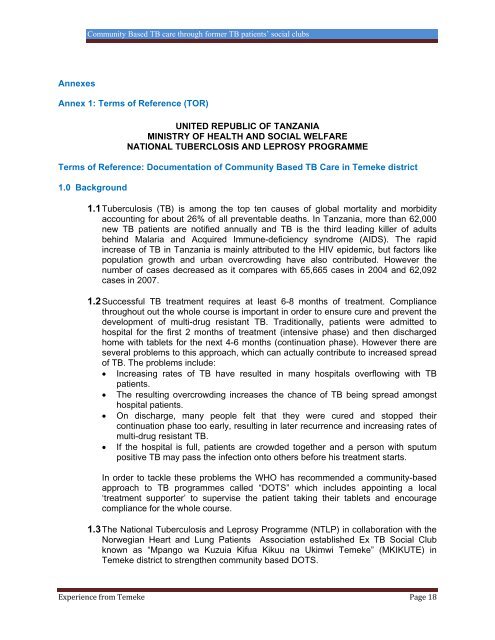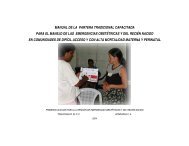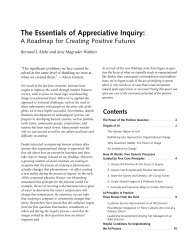Community-Based TB Care: Experience from ... - CORE Group
Community-Based TB Care: Experience from ... - CORE Group
Community-Based TB Care: Experience from ... - CORE Group
You also want an ePaper? Increase the reach of your titles
YUMPU automatically turns print PDFs into web optimized ePapers that Google loves.
<strong>Community</strong> <strong>Based</strong> <strong>TB</strong> care through former <strong>TB</strong> patients’ social clubsAnnexesAnnex 1: Terms of Reference (TOR)UNITED REPUBLIC OF TANZANIAMINISTRY OF HEALTH AND SOCIAL WELFARENATIONAL TUBERCLOSIS AND LEPROSY PROGRAMMETerms of Reference: Documentation of <strong>Community</strong> <strong>Based</strong> <strong>TB</strong> <strong>Care</strong> in Temeke district1.0 Background1.1 Tuberculosis (<strong>TB</strong>) is among the top ten causes of global mortality and morbidityaccounting for about 26% of all preventable deaths. In Tanzania, more than 62,000new <strong>TB</strong> patients are notified annually and <strong>TB</strong> is the third leading killer of adultsbehind Malaria and Acquired Immune-deficiency syndrome (AIDS). The rapidincrease of <strong>TB</strong> in Tanzania is mainly attributed to the HIV epidemic, but factors likepopulation growth and urban overcrowding have also contributed. However thenumber of cases decreased as it compares with 65,665 cases in 2004 and 62,092cases in 2007.1.2 Successful <strong>TB</strong> treatment requires at least 6-8 months of treatment. Compliancethroughout out the whole course is important in order to ensure cure and prevent thedevelopment of multi-drug resistant <strong>TB</strong>. Traditionally, patients were admitted tohospital for the first 2 months of treatment (intensive phase) and then dischargedhome with tablets for the next 4-6 months (continuation phase). However there areseveral problems to this approach, which can actually contribute to increased spreadof <strong>TB</strong>. The problems include:• Increasing rates of <strong>TB</strong> have resulted in many hospitals overflowing with <strong>TB</strong>patients.• The resulting overcrowding increases the chance of <strong>TB</strong> being spread amongsthospital patients.• On discharge, many people felt that they were cured and stopped theircontinuation phase too early, resulting in later recurrence and increasing rates ofmulti-drug resistant <strong>TB</strong>.• If the hospital is full, patients are crowded together and a person with sputumpositive <strong>TB</strong> may pass the infection onto others before his treatment starts.In order to tackle these problems the WHO has recommended a community-basedapproach to <strong>TB</strong> programmes called “DOTS” which includes appointing a local‘treatment supporter’ to supervise the patient taking their tablets and encouragecompliance for the whole course.1.3 The National Tuberculosis and Leprosy Programme (NTLP) in collaboration with theNorwegian Heart and Lung Patients Association established Ex <strong>TB</strong> Social Clubknown as “Mpango wa Kuzuia Kifua Kikuu na Ukimwi Temeke” (MKIKUTE) inTemeke district to strengthen community based DOTS.<strong>Experience</strong> <strong>from</strong> Temeke Page 18

















